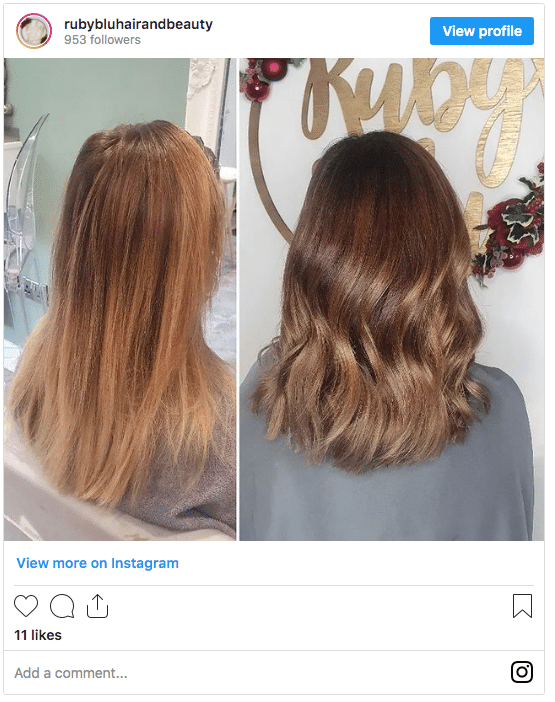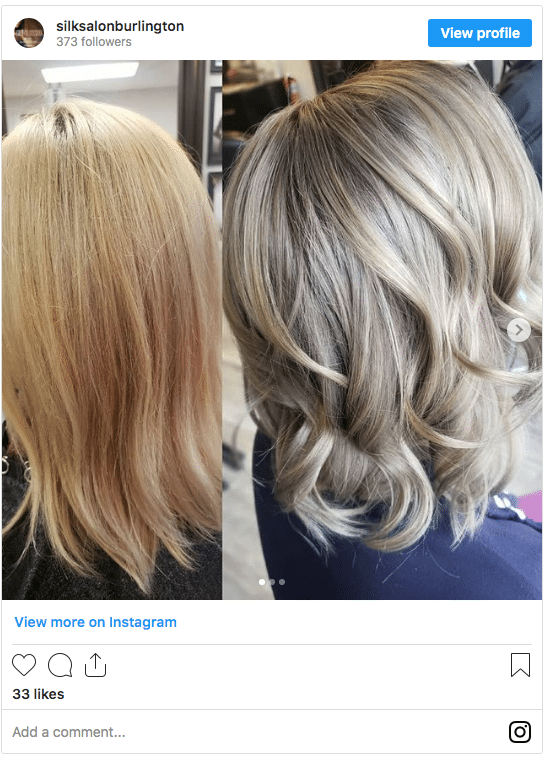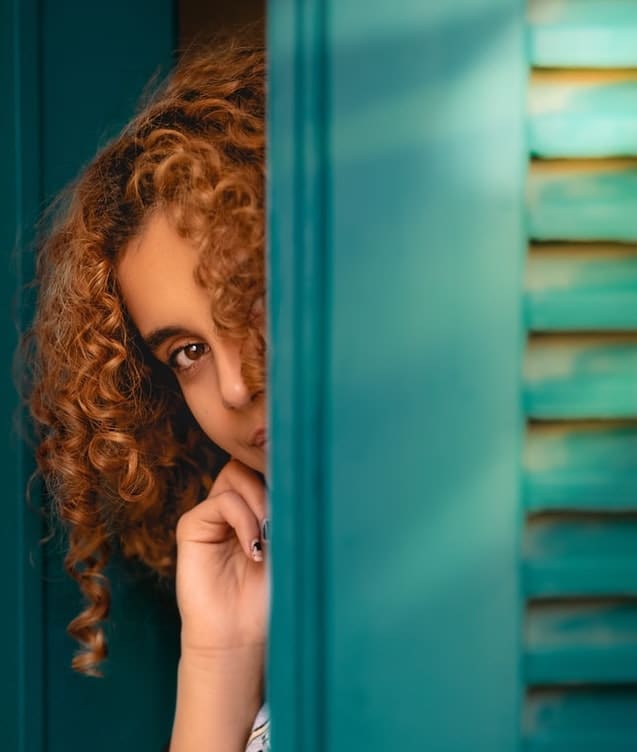Have you ever looked in the mirror after a hair dye session, expecting to see your dream color, only to find unexpected, glaring orange tones staring back at you? You’re not alone!
Many of us have been there, feeling a mix of surprise, frustration, and a little bit of all-encompassing panic. Whether it was a DIY adventure gone awry or a salon visit that didn’t turn out as planned, dealing with orange hair can feel like a daunting task.
But here’s the good news: You’ve stumbled upon the right place to find a solution!
This post is all about exploring effective color solutions to cover orange hair. We’re going into the dos and don’ts, the whys, and the hows of turning that unexpected orange into a color you love and feel confident in.
From understanding the basic principles of hair color to hands-on advice on choosing the right dye, we’ve got you covered. So, let’s transform those brassy tones into something fabulous!
Read on!
As an Amazon associate, I earn from qualifying purchases.
Table of Contents
- What Color Covers Orange Hair?
- Understanding Why Orange Hair Happens
- Orange hair before and after.
- 3 Effective Ways to Cover Orange Hair
- The Color Wheel Magic: Finding The Right Color Match
- Choosing the Right Hair Dye For Your Hair.
- How to Fix Orange Hair With Box Dye.
- Toning Orange Hair
- How to Avoid Orange Hair Altogether
- Orange Hair FAQs
- Parting words
- Our Research & Review Process
What Color Covers Orange Hair?
Blue and purple are the best colors to neutralize orange hair. These colors are opposite orange on the color wheel, which means they cancel each other out, effectively reducing the appearance of orange tones.
Understanding Why Orange Hair Happens
This surprise orange is all about what’s hiding beneath our natural hair color: undertones.
When we lighten hair, we’re peeling back layers to reveal these underlying pigments. For many, especially those with darker hair, these pigments are warmly toned, bursting with reds and oranges.
Why does this happen? It’s simple: the dye or bleach might not lift your hair color enough to bypass these warm undertones, leaving you with more pumpkin than platinum!
But here’s the silver lining: understanding these undertones is your first step towards fixing them.
Hair coloring is a bit like art; it’s all about mixing the right colors to cancel out the ones you don’t want.
So, if orange wasn’t what you were aiming for, don’t worry. We’re here to tell you how to cover it up effectively and get you closer to your dream hair color.
Orange hair before and after.


3 Effective Ways to Cover Orange Hair
Covering this color can be tricky. It’s not like there’s a hair magic potion and voila, fresh new locks.
Plus the fact that orange is such an unappealing color to some people (no shade, we don’t mean on-trend copper and ginger).
So when it comes to covering up your orange hue, what do you use? Well here are three options!
- Bleach your hair with a high-lift bleach so that it’s as light as possible before applying a new color.
- Apply a semi-permament hair dye or permanent color or professional toner over the top.
- Use temporary colors until it grows out (this is so high maintenance though!).
The Color Wheel Magic: Finding The Right Color Match
Picture a color wheel, that rainbow circle you might remember from art class. This isn’t just for painters; it’s a crucial tool for hair stylists and DIY colorists alike.
The color wheel helps us understand which colors can cancel out or neutralize others.
The best colors to cover up icky orange hair color are those with a purple, rich red, black or blue base.
Blue and purple pigments counteract red and brassy orange tones as they are opposite colors so cancel each other out.
Black is a solid color that’s able to cancel out all colors – be careful if you choose black as it’s hard to get out of your hair!
If you take a look at the hair color wheel that the rules of all hair colors abide by, you’ll see that blue is directly opposite orange.
That’s why we use things like blue shampoos to neutralise unwanted brassy, orange tones in brown hair to correct it and restore the cooler color.

Choosing the Right Hair Dye For Your Hair.
The right color hair dye get rid of orange hair.
There are many different types of hair dye, so it is important to find the right one for your hair.
How well it covers orange depends on the color you are dyeing your hair and what tone you want to use. Think about if your hair is warm or cool-toned and choose a dye accordingly.
Colors with purple, blue or black bases and red hair dye will cover orange hair.
Orange hair dye will also do!
Always use the color codes that are given on the box of your hair dye. Follow instructions carefully and make sure you do a strand test first.
Your hairdresser will be able to help you get rid of unwanted or brassy tones in your new dye job. Don’t be afraid to ask questions!
Expert Insights
“If you have bleached hair and want to cover unwanted orange or green tones then make sure that the color that you pick doesn’t get deeper once applied – otherwise, it will turn out too dark instead of lighter like you wanted!”
Enza Piazza, Hair Stylist & Color Consultant
How to Fix Orange Hair With Box Dye.
There are a whole range of hair dyes you can buy off the shelf that will give you the right tone and shade to cover any unwanted color yourself at home.
Here are 9 stunning hair dye colors that will do the job!
As an Amazon associate, I earn from qualifying purchases.
#1 Natural Blue Black
The first thing we noticed about this particular blue black box dye was that the formula is pretty thick.
This makes it easy to apply but also makes your hair feel really soft as the color sinks in and works its magic.
The color was dark at first – more black than blue – with glints of blue that catch the light and make your hair shimmer.
Go for this if you want to hide your horrid tones with a subtle, blue black.
Best for: Blue black color.
#2 Deep Indigo.
This is a dark color with purpley-blue undertones and as it says on the box – the lighter your hair, the longer your wear.
We left it in longer for than the instructions to be sure the color would take as a few reviews said it didn’t.
The result was a gorgeous, rich deep purple-blue hue but not as black as the box. Use this if you have dark hair already to add a purpley tint.
Best for: Dark purple tints.
#4 Electric Blue.
This is one of Schwartzkopf’s dazzling urban metallic, permanent hair colors so we were expecting intense results. We weren’t disappointed.
It’s almost a steel blue color with it’s shimmery silver tones.
There’s a great color-guide on the box and you’ll need to be blonde to get the box color. Go for it if you want orange-free blue with metallic tones.
Best for: Cool blue tones with a metallic shine.
#5 Dark Burgundy Brown.
Nice n easy dyes are easy to put on and feel like their conditioning your hair while they get to work on your head.
The burgundy color result was a subtle, reddish-purple hue that was super warm and rich.
Most of all, our hair felt amazingly soft and in good condition. This makes our list just for that.
Best for: Burgundy softness and shine.
#6 Deep Violet.
This stunning violet shade came with a good amount of creme that was easy to apply and had an ingenious design that means the box can hold the bottle.
The color is fab – our light brown hair now has all over pinky-purple tones that gives a lustrous, even color. And zero orange!
Best for: All over even violet.
#7 Radiant Plum.
We tried this color on warm brown hair with red undertones and the result was shimmering purple plum tresses of joy.
It was a little messy to apply but the formula was generous and the end color was the most rich and intense perfect plum.
It may wash out to red but it’s still going strong after 5 washes so all good.
Best for: Intense plum perfection.
#8 Intense Auburn.
This is full-on intense auburn red if your hair is already lightened. We used it on blonde hair and the result was a bold, block color of fire engine red.
The only problem with this is – it’ll fade to orange! So stock up on boxes to keep it topped up.
Best for: Warm pillarbox red.
#9 Cherry Brown.
This is a darker chocolate cherry color with rich purple and blue tones.
The foam is a revelation, so easy to apply and sinks into our hair to really penetrate it with color. (You can find out more about why we love John Frieda Foam Precision Dyes here).
The color had real depth with multi-dimensional glints and really soft from the sweet smelling conditioner.
It does become lighter after a couple of washes and starts to appear a lighter red than purple. But it’s cool tones cancelled our orange and that’s what it’s all about.
Best for: Cool red with a hint of purple.
#10 Black.
This black hair dye easy to apply and the formula is thick so it stays on your head not your bathroom floor. It’s easier to be more precise with it so your forehead won’t be dyed too!
As for the color? We needed two boxes to get it really black. But the color came out rich and glossy and in really good condition. Orange hair is a distant memory.
Best for: Mess-free black hair dye.
Toning Orange Hair
Sometimes, a new dye job isn’t needed. It’s easy to tone your hair at home using the right products. There are three types of toner you can use.
Method #1 Use a profesional toner.
Professional toners are mixed and applied by your hairdresser much stronger than the ones you buy in stores. It’s important to use it safely though or else you could damage your hair.
You should only get a professional toner if you already know how to tone, otherwise using one can make things worse instead of better.
Method #2 Use a glossing toner
Glossing toners are the easiest to use at home. This product is applied over your hair color, left on for 5-15 minutes, and then rinsed off. It can be used on darker or lighter hair, but not on bleached hair.
These toners come in many colors, so you can choose whether you want to lighten or darken your hair.
They’re safe to use and won’t cause any damage to your hair – although some people find them drying and tricky to remove.
Method #3 Use a toning shampoo
Purple or blue shampoos are also a type of toner. They add color to your hair without completely changing it.
They neutralize unwanted orange or yellow tones in your hair and can be used once a week to keep your color cool or tone down hair color that’s too bright.
If you choose a technique other than applying glossing toners or shampoos don’t leave it in for too long because you could cause serious damage to your hair.
How to Avoid Orange Hair Altogether
It’s still easier to avoid orange tones than to remove them once they’ve appeared. Try to avoid too many washes, as shampooing too often can loosen the dye from your hair.
Avoid using products with sulfates, parabens and alcohol if you have orange tones since those ingredients will only make the problem worse.
It’s also a good idea to use a deep conditioner every week or two to keep your hair healthier.
Wearing a hat in the sunshine will protect your color from UV rays.
To get rid of an unwanted color altogether you’re going need a professional stylist at your local salon to tone your hair for you.
If you’re nervous about trying this at home then try glossing toners first since it is much safer than other options!
Orange Hair FAQs
Why did my hair turn orange after dyeing?
Your hair turned orange due to the underlying warm pigments (red and orange) that are exposed when hair is lightened, especially in darker hair. This can happen if the dye or bleach isn’t strong enough to lift your hair color beyond these warm undertones.
Can I cover orange hair without bleaching it again?
Yes, you can cover orange hair without further bleaching by using a dye with a blue or purple base to neutralize the orange tones. Ash blonde, ash brown, and certain darker shades can also effectively cover orange tones.
What color neutralizes orange hair?
Blue and purple are the best colors to neutralize orange hair. These colors are opposite orange on the color wheel, which means they cancel each other out, effectively reducing the appearance of orange tones.
How can I choose the right dye to cover my orange hair?
Look for dyes that are specifically designed to neutralize orange tones, such as those with blue or purple bases for lighter hair, or ash tones for darker hair. Always consider your desired end result and choose a shade that aligns with your goal.
Can toning shampoos help with orange hair?
Yes, blue or purple toning shampoos can help neutralize orange tones in hair. These shampoos deposit color pigments into your hair to counteract orange or brassy tones, making them a great option for maintenance between dye jobs.
How often should I use toning shampoo on orange hair?
Toning shampoos can be used once a week or every other wash to keep orange tones at bay without over-depositing color. It’s important to follow the product’s instructions and monitor your hair’s response to adjust usage as needed.
Will covering orange hair damage it?
Covering orange hair with dye can be done safely if you follow the product instructions and take care of your hair before and after the process. Using conditioning treatments and avoiding over-processing will help minimize damage.
Can I fix orange hair at home, or should I see a professional?
Many people successfully cover orange hair at home using the right products. However, if you’re unsure about the process or if your hair is significantly damaged, consulting a professional hairstylist is recommended.
Parting words
So if you have unwanted tones in your hair, don’t fret. Now you know how to get rid of them.
There are plenty of ways and hair dye colors available to help you cover it up. Stock up for next time there’s a hair emergency!
Found your perfect shade? We’d love to see it! Tag us on Instagram @colouredhaircare or Facebook and share your hair dye success stories. Looking for more hair care tips? Check out How to Look After Colored Hair: 11 Expert Secrets For Long-Lasting Color.

Our Research & Review Process
To ensure our recommendations are as comprehensive and reliable as possible, we’ve undertaken an extensive research effort.
We cite scientific evidence and journals, collect real user reviews and gather impartial perspectives from hair stylists, users, and experts in the field.
Additionally, we conduct hands-on testing by using products and applying hair dyes not only on our own locks but also on real human hair extensions and hair pieces of different hair type, textures and lengths.
This rigorous approach allows us to provide you with insights into which products genuinely live up to their promises.
As always – please consult with a professional hair colorist or stylist for advice on how to color your own hair at home. It’s different for everyone!










